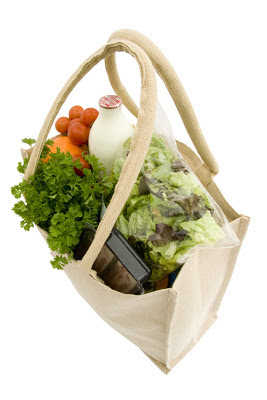The New Year is just 7 days old and already resolutions are being broken. So what can you do to help keep your resolutions on track? Don’t make a resolution, make a SMART goal. SMART is an acronym that stands for specific, measurable, achievable, realistic/relevant and time-bound. Some of the most popular New Year’s resolutions are “getting fit” or “losing weight”, but these resolutions are nothing more than great ideas if you don’t have a plan in place to help you achieve your goals.

Before we even get to the goal setting, grab a pen and some paper and write it down. Writing down your goals will accomplish a few of things. First, it will make your goal more real. Better yet, write down your goal and hang it somewhere so you see it every day to reinforce your motivation to change. Second, writing down your goal and the steps you’re going to take to get there will make it a less overwhelming and less frustrating process. Finally, have a plan laid out and accomplishing one thing at a time will help you stay focused, keep you on track and make you more successful.
Be specific
The most common mistake people make is using broad statements as goals. Phrases like “I want to lose weight” or “I want to get healthier” don’t tell us anything about what you are going to do lose weight or get healthy. You are more likely to achieve your goal if they are well-defined and focused.
Make it measurable
Setting a goal with no measurable outcome is like a football game with no one keeping score. You don’t know what the outcome of the game is because there was no way to measure it. The same is true for goal setting; if you don’t have a measurable outcome you are less likely to be successful. So play the numbers game. Attaching numbers to you goal gives you a concrete way to track your progress.
Is it Attainable?
Far too often people set goals beyond their reach by asking and expecting too much of themselves. No goal is attainable without a schedule or the steps in place that you are planning to take. So how are you going to achieve you goal? Maybe you are going to walk during lunch twice a week or maybe instead of your typical afternoon snack of a large peppermint mocha with extra whip you’re going to swap it out for apple slices with 1 tablespoon of peanut and a glass of water. Whatever steps you are going to take write them down as part of your schedule. You are more likely to go for that walk if you have carved time out of your day to do.
Is it Realistic?
Some examples of unrealistic goals include losing 10 pounds in a week and becoming a vegan overnight. If you set goals like this you are setting yourself up to fail. This can also be a good time to look at your short-term and long-term goals. If your long-term goal is to become a vegan than start by examining why you want to make that lifestyle change and educating yourself on what the vegan diet entails. Being honest with yourself if important too. If you know that you will never give up cheese perhaps veganism isn’t for you.
Time-Bound
This goes back to the numbers game. Give yourself a time-frame for achieving not only your overall goal but each step along the way. It is important to be specific and realistic about the time it is going to take you to achieve your goals.
So what exactly does a SMART goal look like? Let’s take a look at a resolution vs. a SMART goal.
SMART goal: I am going to lose 25 pounds with a goal of losing 1-2 pounds per week for the next 6 months by walking for 40 minutes at lunch on Tuesdays and Thursdasy and eating fruits and vegetables for my afternoon and evening snacks.
See the difference? You could probably even go a step further and specify what types of fruits and vegetables you plan to eat as a snack. A few words of advice:
Don’t get upset by setbacks – change is a process and you are only human. The best thing you can do is try to figure out why you slipped up what you can do to stop it from happening again. Be POSTIVE, even in the face of setbacks.
Be flexible – if you are finding that a part of your plan isn’t working that ok! This is a process of trial and error. Making tweaks to your plan is important because it makes it a more doable plan for you.
Get someone else involved – Many people find that it is hard to make big changes alone. It is totally ok if you need help. The important part is that you ask for it. Find a running buddy to help motivate you to reach your fitness goals or enlist the help of a professional, like a registered dietitian to achieve your nutrition goals. Getting help and creating a support system is a great way to help you be more successful.
References
Geithner, C., Albert, J., & Vincent, J. (2007). Personal balance: Its importance and how to achieve it. ACSMS Health and Fitness Journal, 11(1), 7-14.
Guest blogger: Chelsea Rambo, USD Dietetic Intern






















